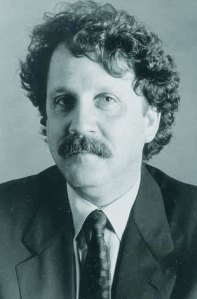Project Launcher Ken Levien Says Business Is Picking Up for His Project Management Firm
By Jotham Sederstrom July 20, 2010 1:56 pm
reprints Since founding Levien & Co. 18 years ago, Ken Levien has carved out a niche as a boutique project management firm that balances the needs of architects, contractors and engineers on behalf of owners and developers. With business slowly returning to normalcy, Mr. Levien, 58, said that his staff of 18 has focused their skills on nonprofits like Carnegie Hall and public-private endeavors like the recent renovations of Union Square Park.
Since founding Levien & Co. 18 years ago, Ken Levien has carved out a niche as a boutique project management firm that balances the needs of architects, contractors and engineers on behalf of owners and developers. With business slowly returning to normalcy, Mr. Levien, 58, said that his staff of 18 has focused their skills on nonprofits like Carnegie Hall and public-private endeavors like the recent renovations of Union Square Park.
The Commercial Observer: You oversee a lot of development projects, expansions and office moves. With the economic climate the way it is, are you seeing much work?
Mr. Levien: I don’t think anybody’s seeing as much work as they did in 2008. At this point, I would say that we’re starting to see some increase in business. We’ve landed about four or five new projects in just the last couple of months, which is a good sign because, to be honest with you, in January and February it was dead as a doornail. So we are seeing an uptick of projects and, in fact, I just got three phone calls while I was out today about potential new projects.
What kind of projects?
All non-for-profit except for one, which is a new small apartment building, which will be a 21-unit small rental building on the West Side of Manhattan, in the Clinton district.
As I understand it, you’ve been doing a lot more nonprofit and government work. How did that shift in focus come about?
When I founded the firm 18 years ago, the bulk of our business was commercial. We were doing renovations of large-scale office buildings. The building we’re currently sitting in is one I had involvement with-hotels and apartment buildings, too. During the late 1990s, we got three projects that were tremendously adventurous to us. One was Columbia University called us to help them build a school and faculty residence. Central Synagogue, just up the street here, had a devastating fire. And the Harvard Club called us and asked us to build a new wing for them. At the time, the firm was only about five people, and we found it so fascinating-the not-for-profit sector-that we decided to devote our energies to it, and that represents probably about 75 percent of our work today.
What did you find so fascinating about the nonprofit sector?
First of all, it’s the program that matters. In other words, nobody goes ahead to build a school or to create a dormitory with the concept that they’re going to make money on it. The concept with the not-for-profit is you’re doing it for the good of the community. The people are generally often volunteers. But the quality of the program is what matters. So you get to build to a higher standard generally than you would if you were building a building in which the profit is the motive. So it’s a different thought process that goes into it.
It seems like a lot of developers and investors shy away from working with nonprofits. What are the drawbacks?
The drawbacks are, perhaps, the fees are slightly lower at times. There are times when you’ll be working with groups that really have no experience. And it can often move more slowly. I would say that the most interesting part of it is that the not-for-profits generally make decisions by committee-unlike a developer who will be coming into make a decision and says, ‘This is what I want, go do it.’


